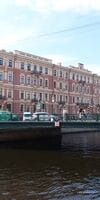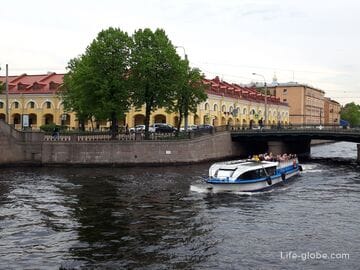The Lantern Bridge is one of the bridges in the historical center of St. Petersburg.
The lantern bridge spans the Moika River in the alignment of the Lantern and Pochtamtsky lanes, and connects the Kazan and 1st Admiralty Islands.
The name "Lantern" bridge was named after the eponymous Lantern Lane, which, in turn, got its name in 1775 from the Lantern state Drinking House located here.
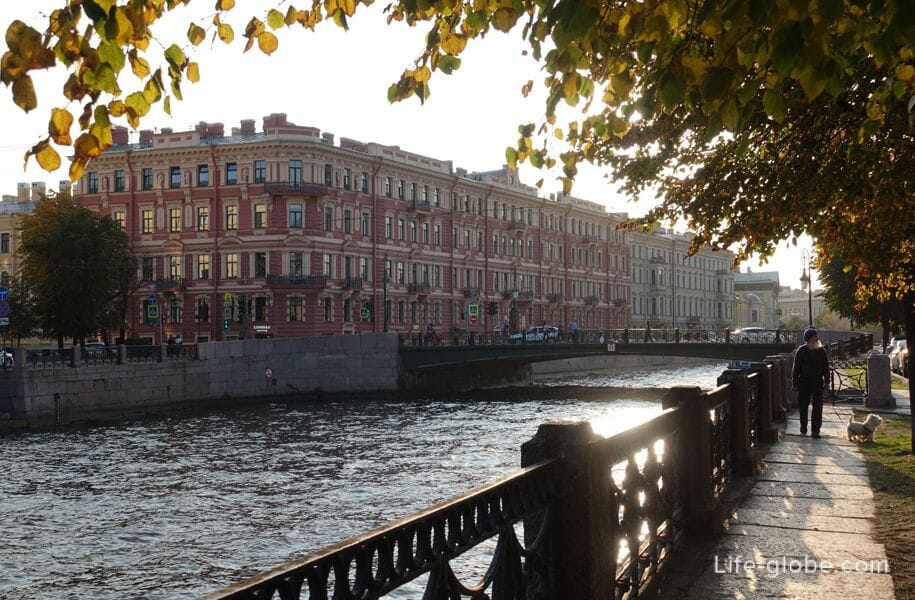
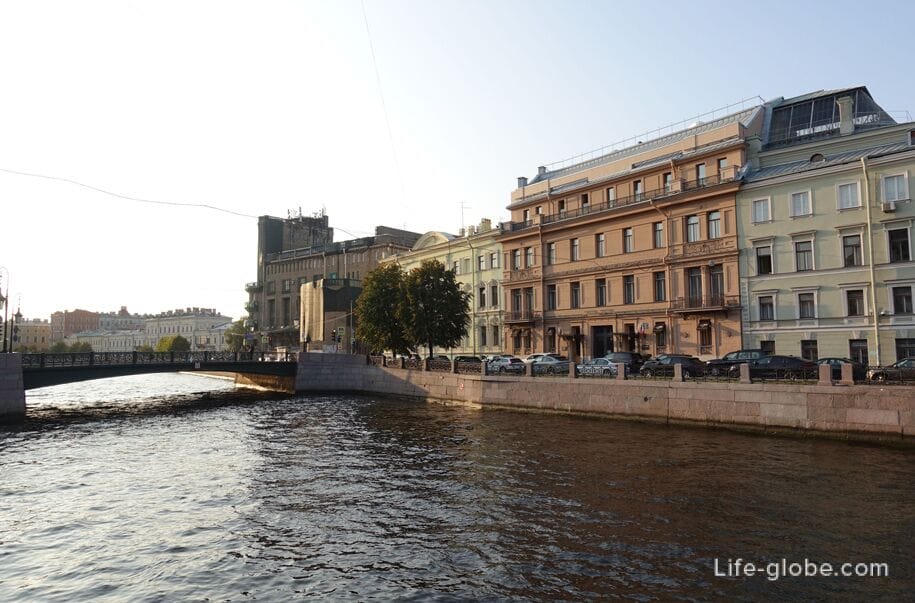
The lantern bridge is 33 meters long and 20 meters wide.
The bridge is a single-span structure, the superstructure of which is made of precast reinforced concrete and by design is a double-hinged frame. The crossbar of the bridge frame is a console mated in the middle of the span by means of a hinge transmitting a transverse force. The facades of the bridge superstructure are covered with profiled metal sheet.
The abutments are massive reinforced concrete, on a pile foundation, lined with granite.
The railings of the bridge are cast-iron grilles made according to the type of fencing of the Moika River.
At the entrance to the Lantern Bridge, on both sides of it, there are hexagonal lanterns on metal floor lamps. There are four lanterns in total.
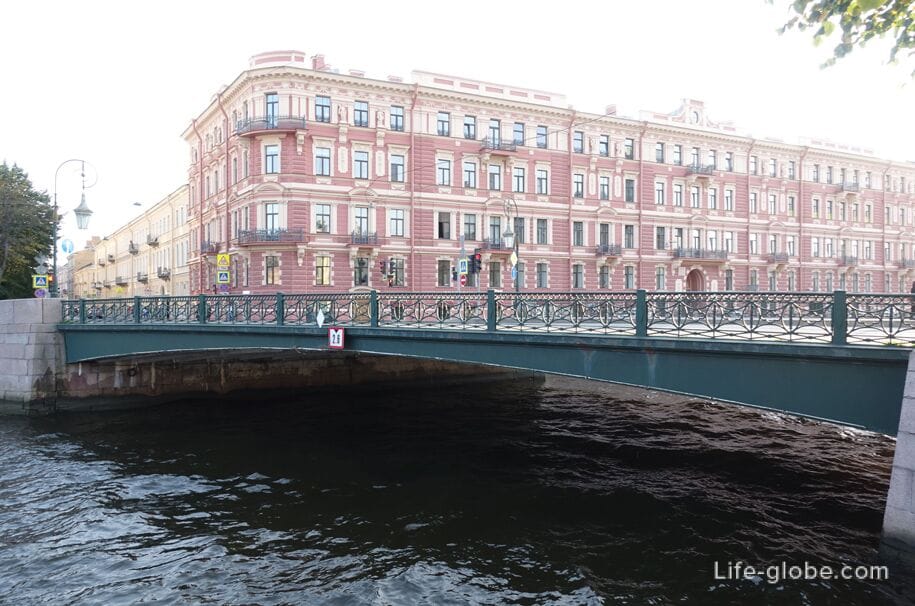


The lantern bridge is a roadway and pedestrian.
Pedestrian sidewalks are located on both sides of the bridge.
The roadway is separated from the sidewalks by a granite curb.
The pavement on the bridge is asphalt.
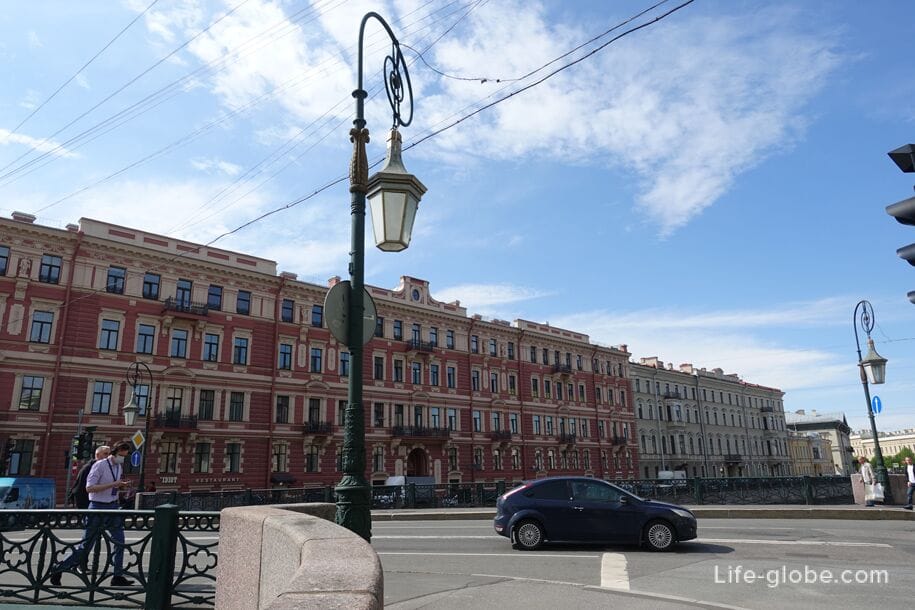
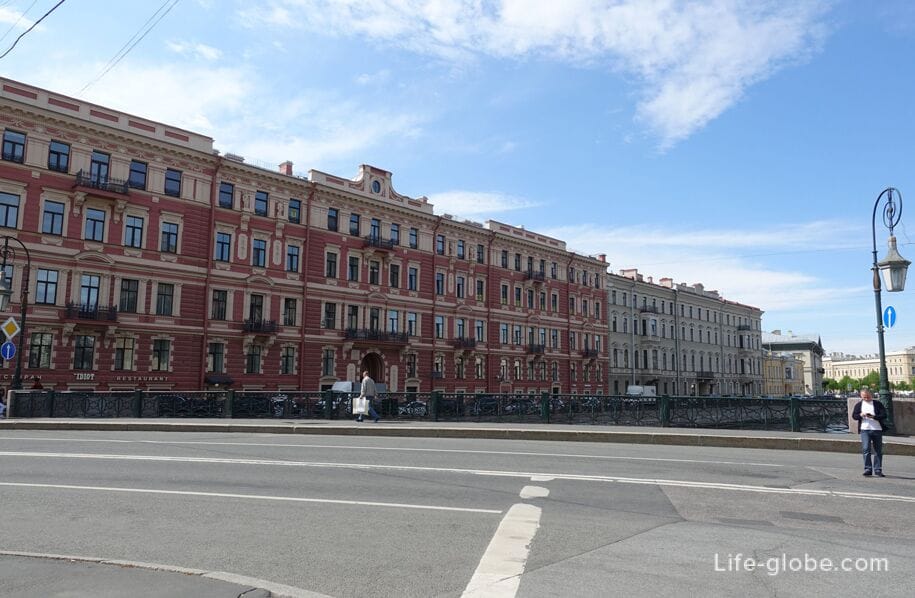
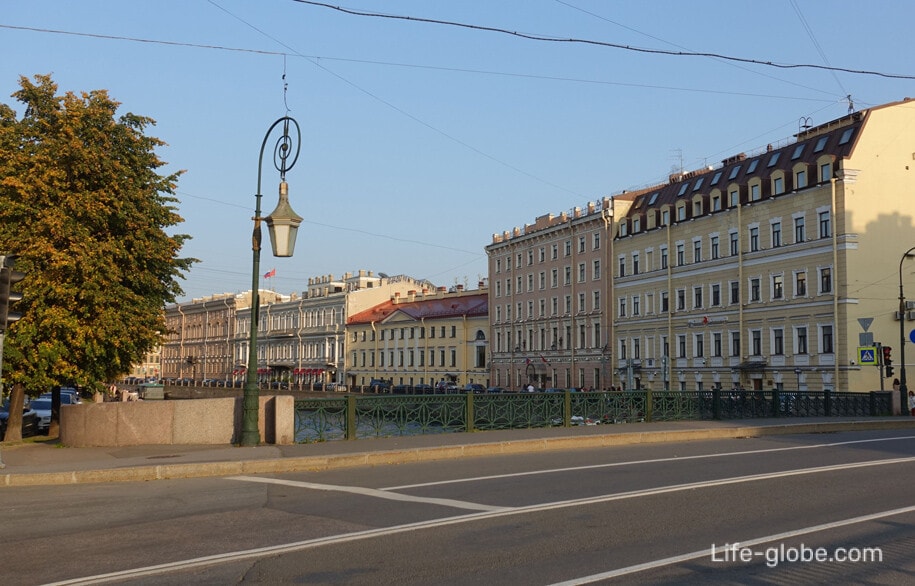
From the Lantern Bridge there are wonderful views of the Moika River, river embankments with historical buildings, as well as the widest bridge in St. Petersburg - The Blue Bridge, located upstream of the Lamppost Bridge, and the Pochtamtsky bridge, spanning the Moika downstream of the Lamppost Bridge.
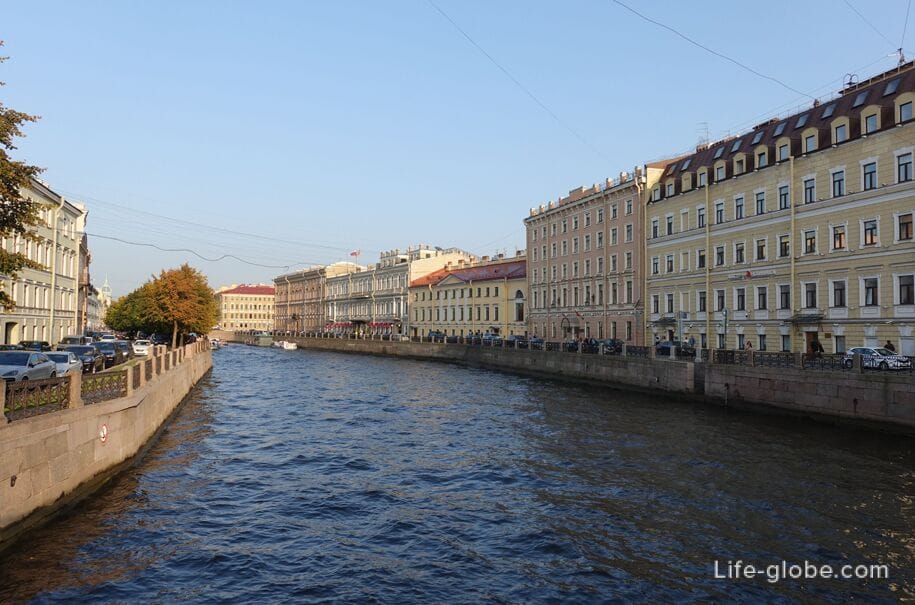
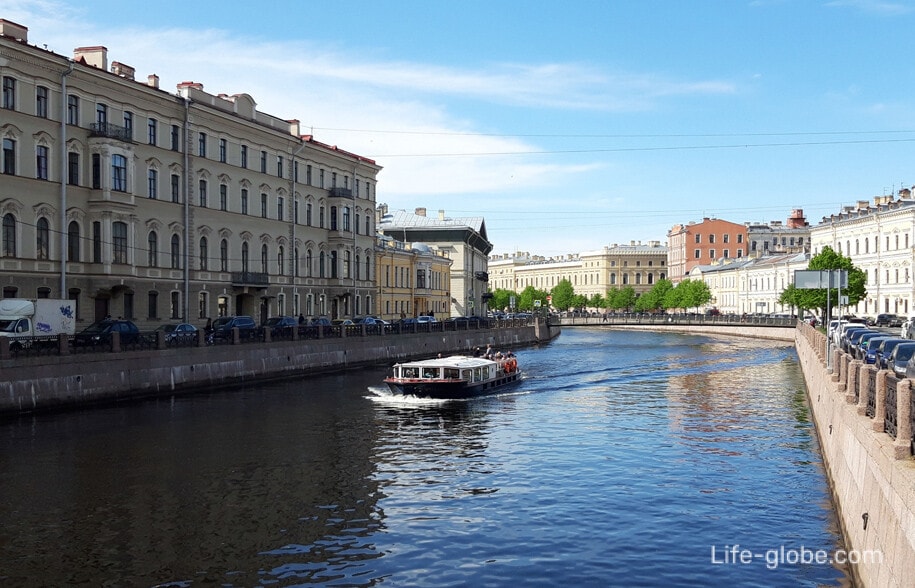
Next to the Lantern Bridge are notable:
- the apartment house and folk baths of M.S. Voronin is a complex built at the end of the 18th century and has an eclectic style. The baths still function today under the name "Lantern Baths".
Address: Moika River embankment, 80-82 / Lantern Lane, 1. Learn more about the apartment building and baths with photos and website...
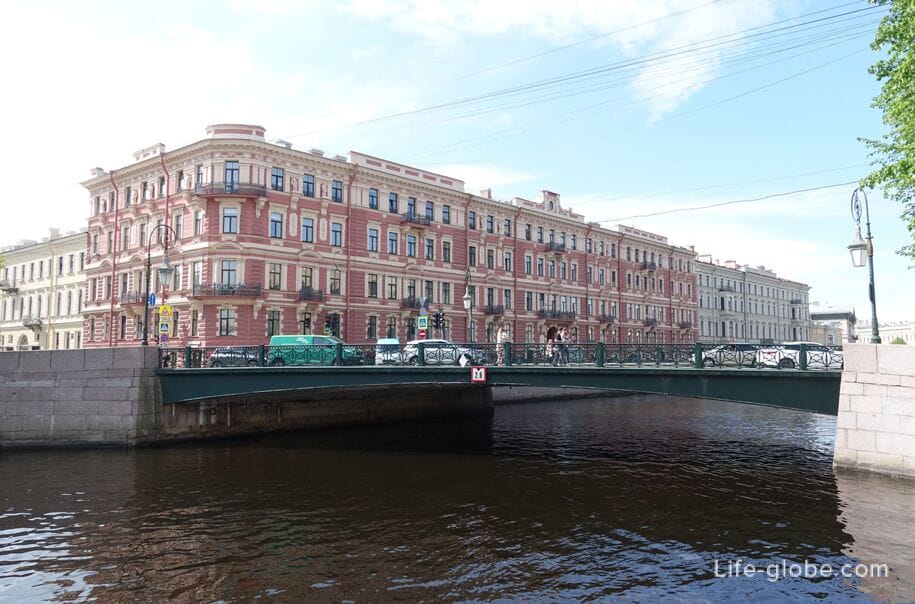
- the former Palace of Culture of Communication Workers, rebuilt in 1932-1939 by architects P.M. Grinberg and G.S. Raitz from the former German Reformed Church.
It was a pseudo-Romanesque temple with a high two-tiered bell tower, and the windows were decorated with stained glass. The walls of the facades of the building were made of red brick without plaster, individual elements were painted white. In 1929, the church was closed and rebuilt by 1940.
The building is designed in the style of constructivism.
Building address: Moika River embankment, 101x / Bolshaya Morskaya Street, 58 / Pochtamtsky Lane, 9.
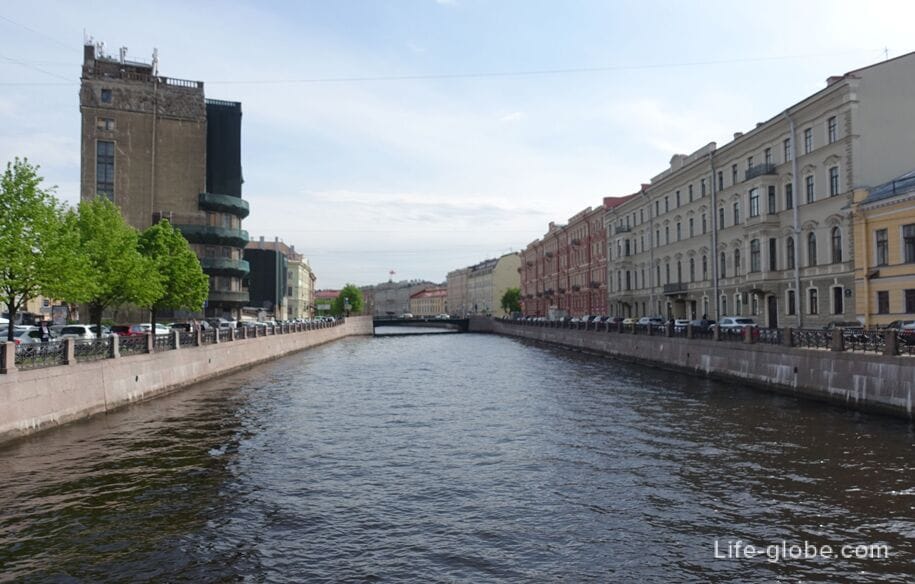
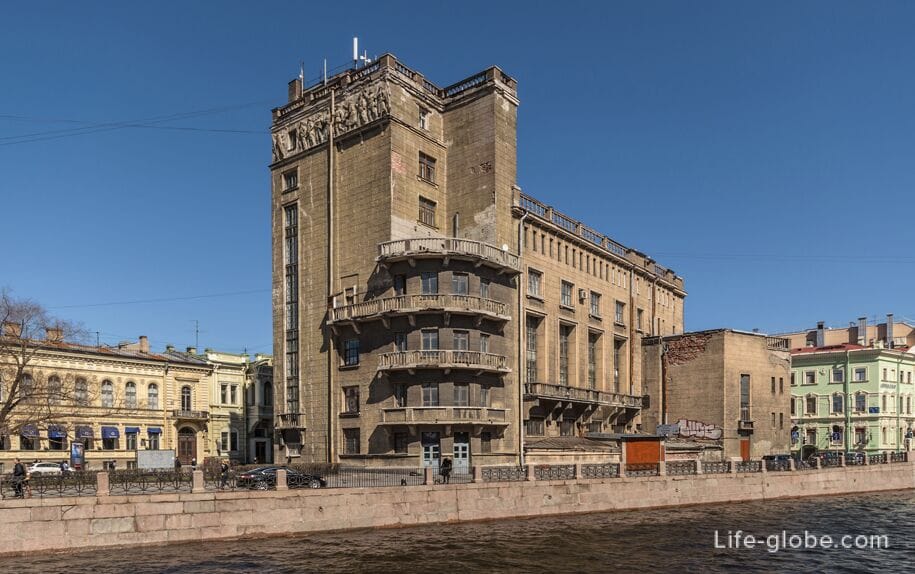
The history of the Lantern Bridge
The first wooden three-span pedestrian bridge at this place appeared in 1906. The bridge was built according to the project of engineer P.A. Likhachev.
In 1950, the wooden span of the bridge was replaced with metal I-beams, and the wooden fence was replaced with metal welded gratings of a simple pattern. The flooring on the bridge remained wooden.
In 1971-1973, a new single-span reinforced concrete bridge was erected, already for traffic and pedestrians, according to the project of the engineer of "Lengiproinzhproekt" L.N. Sobolev and architect L.A. Noskov.
Subsequently, during the history, the bridge was subjected to restoration and repair work.
Practical information
Coordinates of the Lantern Bridge: 59°55'50.0"N 30°18'13.0"E (59.930556, 30.303611).
Nearest metro stations: "Admiralteiskaya", "Nevsky Prospekt", "Gostiny Dvor", "Sadovaya", "Spasskaya" and "Sennaya Ploshchad".
All accommodation facilities in St. Petersburg, including in the city center and more remotely from it, can be viewed and booked here




